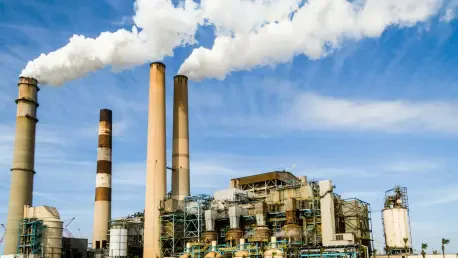Transatlantic Energy Tensions: Setting the Stage
Imagine a world where energy security and climate goals collide on a global stage, with two economic powerhouses pulling in opposite directions. The United States, leveraging its dominance as the world’s largest exporter of liquefied natural gas (LNG) and oil, is aggressively pushing to expand fossil fuel markets in Europe. Meanwhile, European nations are doubling down on renewable energy to meet stringent climate targets. This market analysis delves into the escalating friction between these contrasting strategies, exploring how the U.S. drive for fossil fuel exports could disrupt Europe’s sustainability agenda. The stakes are high, as this clash not only impacts energy markets but also shapes geopolitical alliances and the trajectory of global environmental efforts. Understanding these dynamics is crucial for stakeholders navigating an increasingly polarized energy landscape.
Market Dynamics: Fossil Fuel Push Meets Climate Resistance
U.S. Energy Export Boom: A Strategic Power Play
The U.S. energy sector has seen remarkable growth, positioning itself as a critical supplier to Europe, especially after geopolitical shifts reduced reliance on Russian gas. American LNG and oil exports have surged, filling a vital gap in European energy security. This market dominance is underpinned by a policy stance that prioritizes economic growth, with U.S. officials advocating for fewer regulatory constraints on fossil fuel trade. The argument is straightforward: American energy resources are essential for stabilizing European markets, particularly in times of global uncertainty. However, this aggressive export strategy risks flooding the market with carbon-intensive fuels, potentially locking in long-term dependencies that could undermine other regions’ environmental objectives.
Europe’s Renewable Revolution: A Countertrend in Full Swing
On the other hand, Europe’s energy market is undergoing a profound transformation, driven by a commitment to cut greenhouse gas emissions by 55 percent by 2030 and achieve net-zero by 2050. Massive investments in wind, solar, and other renewables are reshaping the continent’s energy mix, with the goal of reducing dependence on external fossil fuel suppliers. This shift is not merely environmental but also strategic, aiming for energy autonomy in a volatile global landscape. Yet, the transition faces challenges, including the immediate need for reliable energy sources during peak demand periods. The tension lies in balancing these ambitious green targets with the practicalities of current market needs, especially as external pressures mount to maintain fossil fuel imports.
Market Projections: Collision or Coexistence?
Looking ahead, market trends suggest a deepening divide between these two approaches unless strategic compromises emerge. Data indicates that U.S. fossil fuel exports to Europe could increase by 15-20 percent over the next two years if regulatory barriers are eased, potentially generating billions in revenue for American producers. Conversely, Europe’s renewable energy sector is projected to grow at an annual rate of 8-10 percent through 2030, driven by policy incentives and technological advancements. The clash arises as increased fossil fuel reliance could slow Europe’s green transition by a decade, according to industry forecasts. Meanwhile, fluctuating global oil and gas prices add uncertainty, with potential spikes risking economic strain for European consumers already investing in cleaner alternatives. The market outlook hinges on whether dialogue can align short-term energy demands with long-term sustainability goals.
Geopolitical and Economic Implications: A Balancing Act
Strategic Leverage in Energy Supply Chains
The geopolitical ramifications of this energy divide are reshaping market relationships across the Atlantic. Since becoming a primary energy supplier to Europe, the U.S. holds significant leverage, using fossil fuel exports as a tool to strengthen economic ties and counterbalance other global players. This strategic positioning ensures market stability for European nations facing supply disruptions, but it also creates a dependency that could hinder renewable adoption. The push for relaxed environmental regulations by American policymakers further complicates the scenario, potentially flooding the market with cheaper, carbon-heavy fuels. This dynamic raises questions about the long-term viability of Europe’s green agenda in the face of such economic incentives.
Economic Trade-offs: Short-Term Gains vs. Long-Term Costs
From an economic perspective, the influx of U.S. fossil fuels offers immediate benefits, including lower energy costs and enhanced security for European markets. However, these gains come at a steep cost to environmental commitments, as increased carbon emissions could result in billions in penalties and lost opportunities under Europe’s strict climate frameworks. Market analysts highlight that while fossil fuel imports may stabilize prices temporarily, they risk derailing investments in renewables, which are critical for future economic resilience. The challenge for European policymakers is to navigate these trade-offs without compromising on targets, while U.S. producers must weigh the profitability of exports against potential backlash from sustainability-focused markets.
Emerging Risks and Opportunities in Global Markets
Beyond immediate economic impacts, broader market risks loom on the horizon, including potential strains on transatlantic trade agreements if energy policies remain misaligned. A failure to reconcile these differences could push Europe to diversify energy suppliers, exploring partnerships in regions with stronger renewable commitments. On the opportunity side, advancements in carbon capture technologies present a potential middle ground, allowing U.S. producers to market cleaner fossil fuels while supporting Europe’s climate goals. Additionally, joint ventures in green technology could open new revenue streams for both regions, fostering collaboration over competition. These evolving market signals underscore the need for adaptive strategies in an interconnected energy ecosystem.
Reflecting on the Path Forward: Strategic Insights
Looking back, this analysis uncovered a profound rift between the U.S. emphasis on fossil fuel exports and Europe’s dedication to a renewable future, revealing significant market and geopolitical challenges. The data pointed to a potential surge in American energy sales clashing with Europe’s green trajectory, with economic benefits weighed against environmental costs. For stakeholders, the takeaway was clear: navigating this divide required innovative approaches to balance immediate energy needs with sustainable aspirations. Moving forward, energy companies were encouraged to diversify portfolios, blending fossil fuel operations with investments in renewables to mitigate regulatory risks. Policymakers on both sides needed to prioritize collaborative frameworks, perhaps through shared technology initiatives, to bridge the gap. Ultimately, the resolution of this tension demanded a reimagining of transatlantic energy partnerships, focusing on mutual benefits over conflicting priorities.









